Abstract
A mutant strain of Pseudomonas testosteroni blocked in phthalate catabolism converted phthalate into 4,5-dihydroxyphthalate. The latter compound was isolated, and its physical properties were determined. A stoichiometric conversion of the compound to protocatechuate was demonstrated spectrophotometrically with crude extracts of a protocatechuate 4,5-dioxygenase-deficient mutant. Therefore, phthalate is metabolized through 4,5-dihydroxyphthalate and protocatechuate, which is further degraded by protocatechuate 4,5-dioxygenase in P. testosteroni. By using several mutants blocked in phthalate catabolism, 4,5-dihydroxyphthalate decarboxylase was shown to be induced by phthalate. A simple spectrophotometric assay for the enzyme is also reported.
Full text
PDF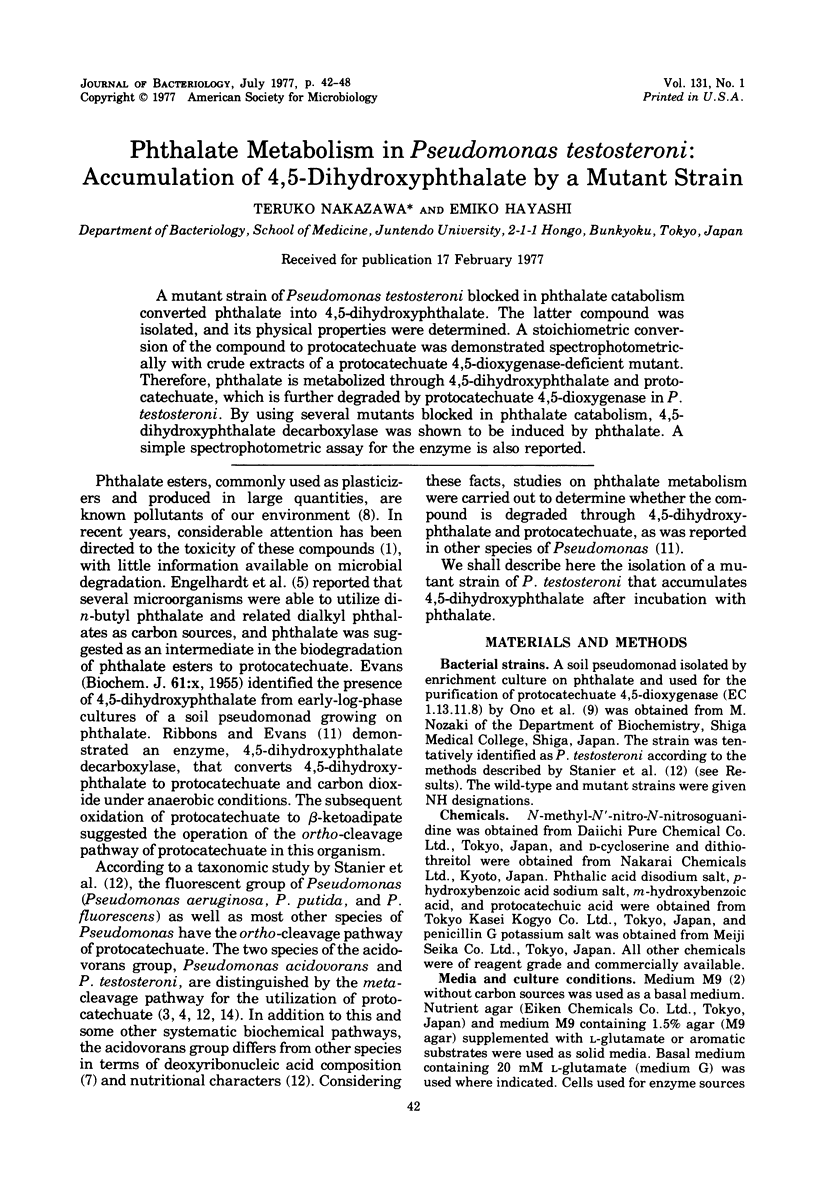

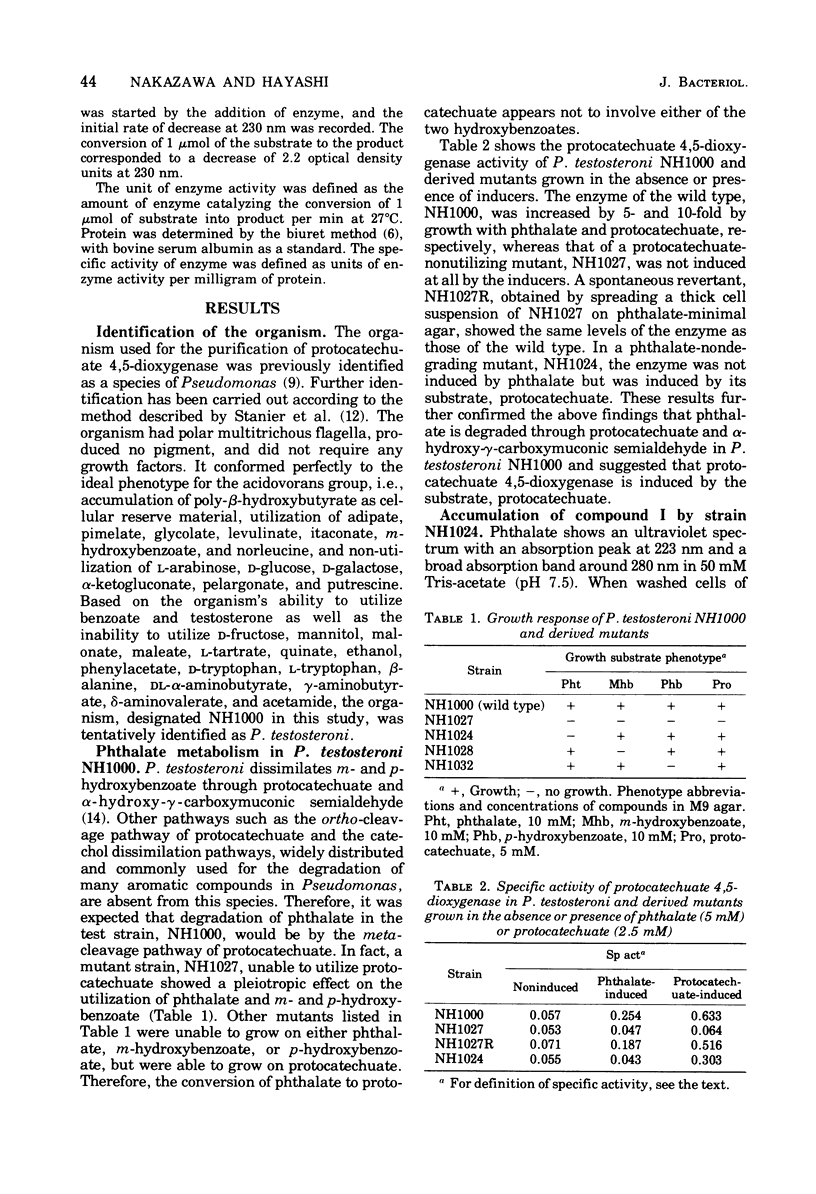
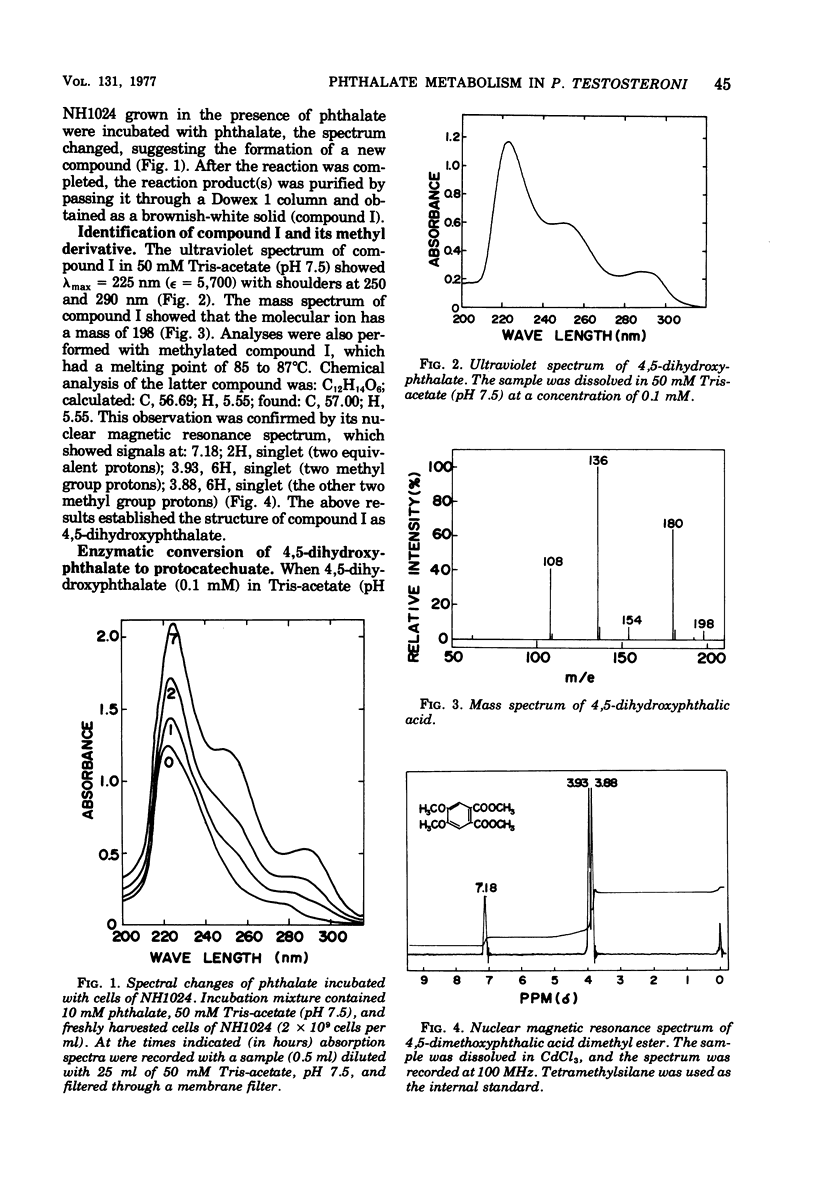
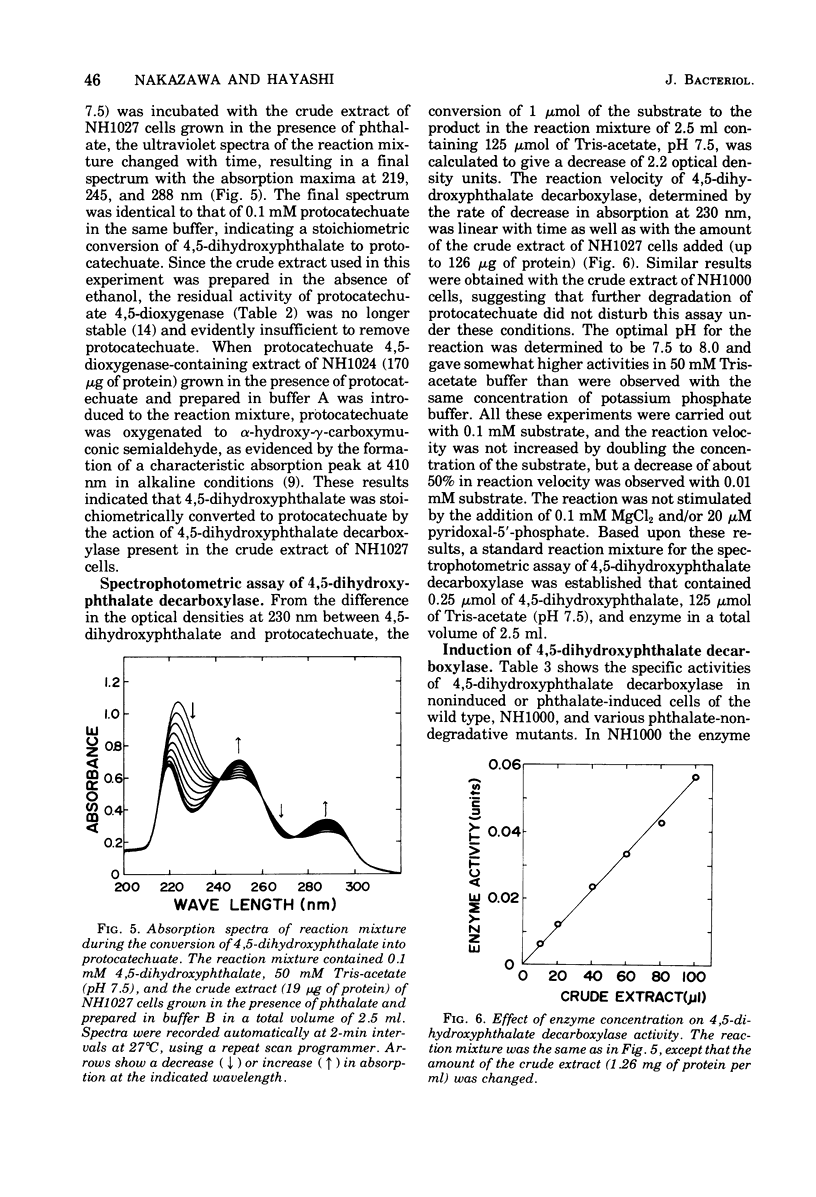
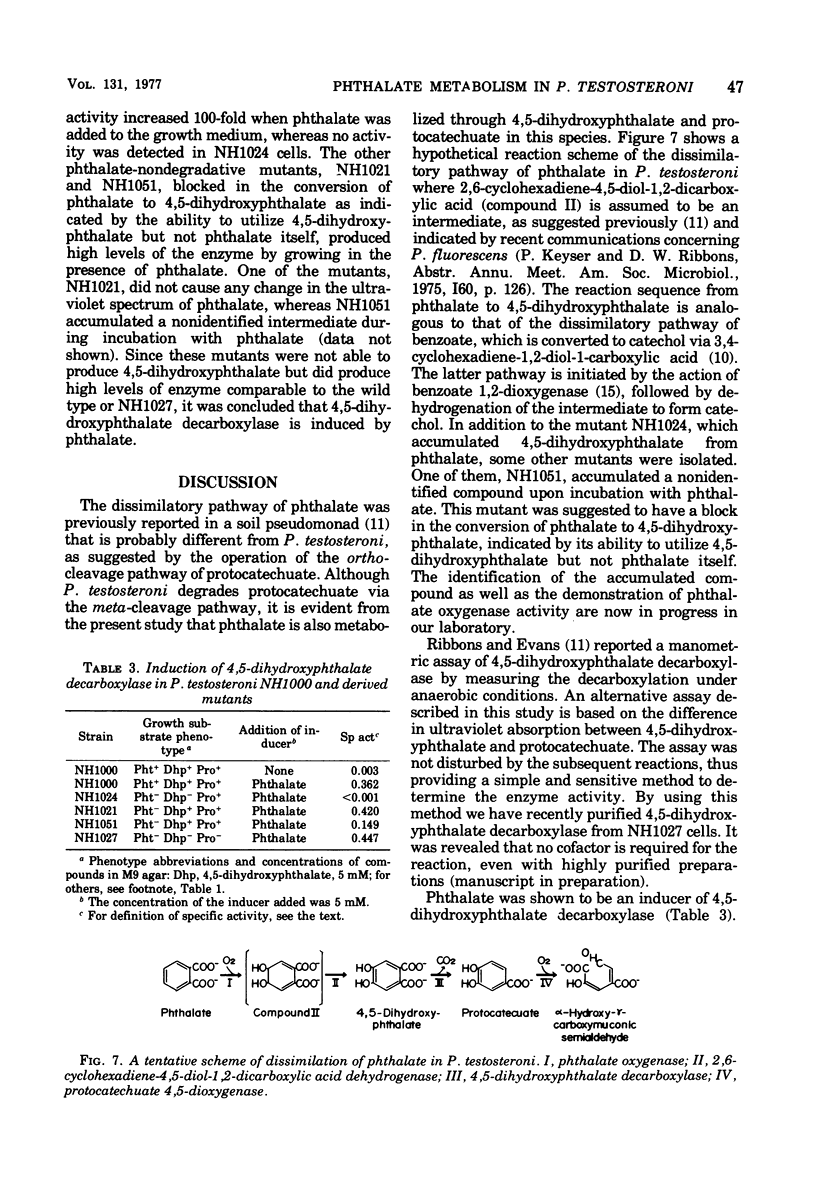
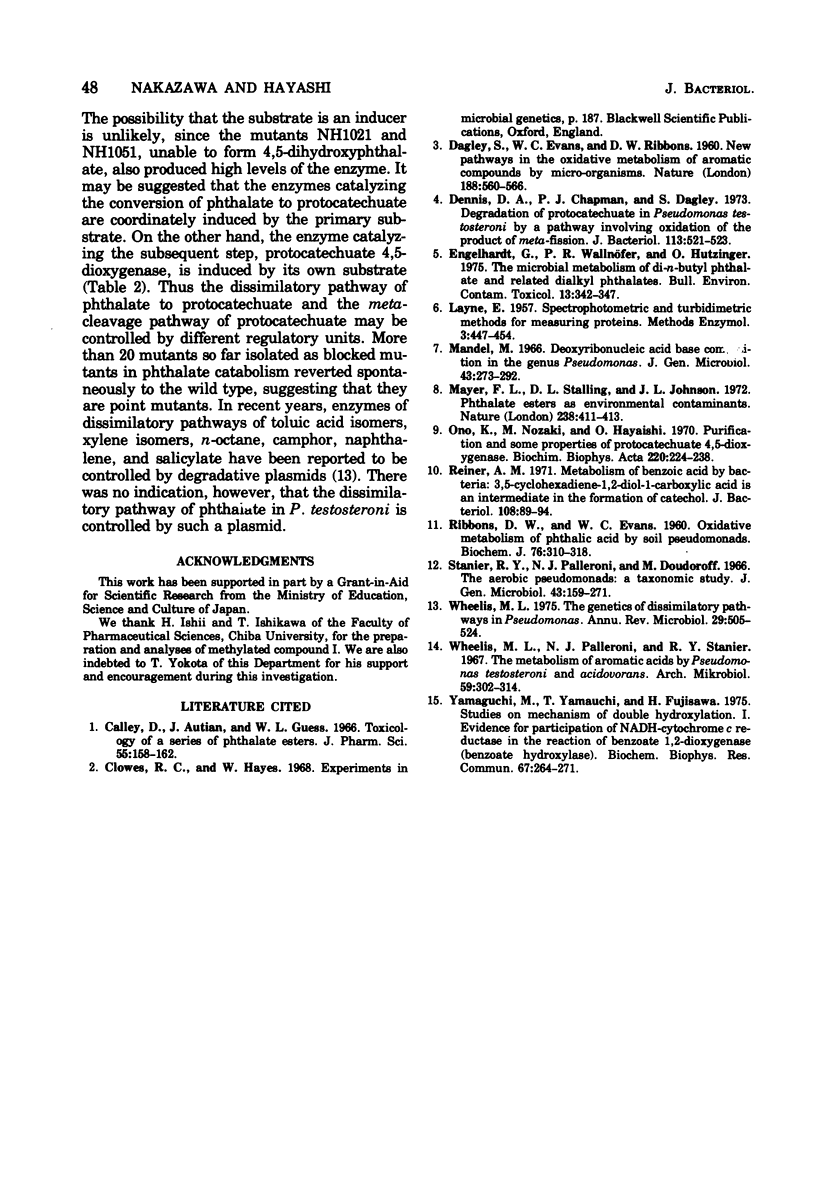
Selected References
These references are in PubMed. This may not be the complete list of references from this article.
- Calley D., Autian J., Guess W. L. Toxicology of a series of phthalate esters. J Pharm Sci. 1966 Feb;55(2):158–162. doi: 10.1002/jps.2600550206. [DOI] [PubMed] [Google Scholar]
- DAGLEY S., EVANS W. C., RIBBONS D. W. New pathways in the oxidative metabolism of aromatic compounds by microorganisms. Nature. 1960 Nov 12;188:560–566. doi: 10.1038/188560a0. [DOI] [PubMed] [Google Scholar]
- Dennis D. A., Chapman P. J., Dagley S. Degradation of protocatechuate in Pseudomonas testosteroni by a pathway involving oxidation of the product of meta-fission. J Bacteriol. 1973 Jan;113(1):521–523. doi: 10.1128/jb.113.1.521-523.1973. [DOI] [PMC free article] [PubMed] [Google Scholar]
- Englehardt G., Wallnöfer P. R., Hutzinger O. The microbial metabolism of di-n-butyl phthalate and related dialkyl phthalates. Bull Environ Contam Toxicol. 1975 Mar;13(3):342–347. doi: 10.1007/BF01685348. [DOI] [PubMed] [Google Scholar]
- Mandel M. Deoxyribonucleic acid base composition in the genus Pseudomonas. J Gen Microbiol. 1966 May;43(2):273–292. doi: 10.1099/00221287-43-2-273. [DOI] [PubMed] [Google Scholar]
- Mayer F. L., Stalling D. L., Johnson J. L. Phthalate esters as environmental contaminants. Nature. 1972 Aug 18;238(5364):411–413. doi: 10.1038/238411a0. [DOI] [PubMed] [Google Scholar]
- Ono K., Nozaki M., Hayaishi O. Purification and some properties of protocatechuate 4,5-dioxygenase. Biochim Biophys Acta. 1970 Nov 11;220(2):224–238. doi: 10.1016/0005-2744(70)90008-2. [DOI] [PubMed] [Google Scholar]
- Reiner A. M. Metabolism of benzoic acid by bacteria: 3,5-cyclohexadiene-1,2-diol-1-carboxylic acid is an intermediate in the formation of catechol. J Bacteriol. 1971 Oct;108(1):89–94. doi: 10.1128/jb.108.1.89-94.1971. [DOI] [PMC free article] [PubMed] [Google Scholar]
- Ribbons D. W., Evans W. C. Oxidative metabolism of phthalic acid by soil pseudomonads. Biochem J. 1960 Aug;76(2):310–318. doi: 10.1042/bj0760310. [DOI] [PMC free article] [PubMed] [Google Scholar]
- Stanier R. Y., Palleroni N. J., Doudoroff M. The aerobic pseudomonads: a taxonomic study. J Gen Microbiol. 1966 May;43(2):159–271. doi: 10.1099/00221287-43-2-159. [DOI] [PubMed] [Google Scholar]
- Wheelis L. The genetics of dissimilarity pathways in Pseudomonas. Annu Rev Microbiol. 1975;29:505–524. doi: 10.1146/annurev.mi.29.100175.002445. [DOI] [PubMed] [Google Scholar]
- Wheelis M. L., Palleroni N. J., Stanier R. Y. The metabolism of aromatic acids by Pseudomonas testosteroni and P. acidovorans. Arch Mikrobiol. 1967;59(1):302–314. doi: 10.1007/BF00406344. [DOI] [PubMed] [Google Scholar]
- Yamaguchi M., Yamauchi T., Fujisawa H. Studies on mechanism of double hydroxylation. I. Evidence for participation of NADH-cytochrome c reductase in the reaction of benzoate 1,2-dioxygenase (benzoate hydroxylase). Biochem Biophys Res Commun. 1975 Nov 3;67(1):264–271. doi: 10.1016/0006-291x(75)90311-3. [DOI] [PubMed] [Google Scholar]


